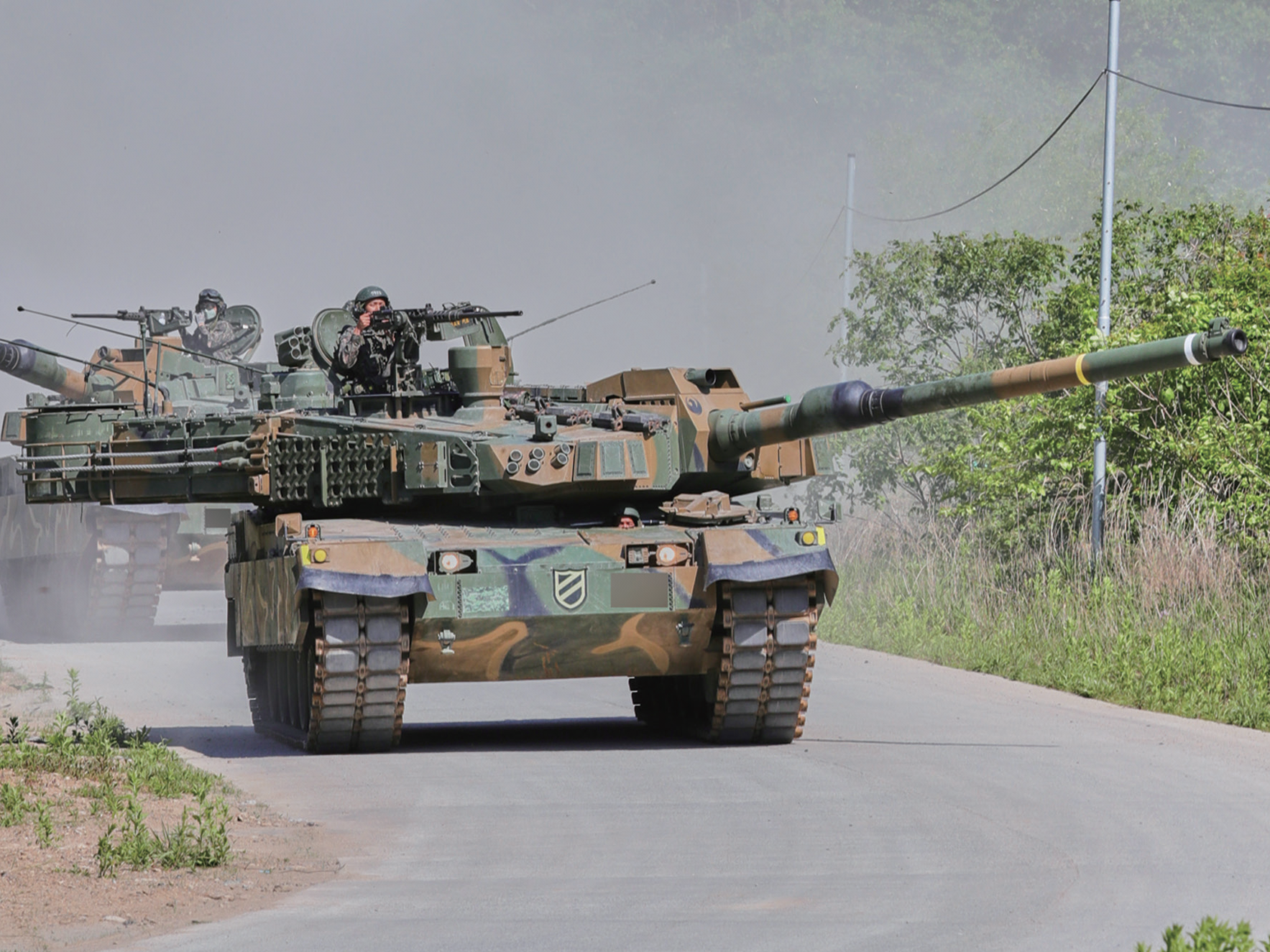Poland has started deploying the K2 tanks acquired from South Korea on the border with Russia’s Kaliningrad region in what appears to be an effort to fortify its borders amid increasing security threats.
Magdalena Kosińska, the spokesperson for Poland’s 16th Pomeranian Mechanized Division, announced on November 14 that Poland had deployed Hyundai Rotem-made K2 tanks from South Korea a few kilometers from Russia’s Kaliningrad Oblast, Ukraine Pravda reported. The tanks were transported by tank transporters to a unit located at Braniewo, which is over 150 kilometers away from the Russian border.
The report stated that the South Korean and Polish officials were working together to equip the vehicles with systems specific to Polish needs. ”The next step will be to equip the tanks with systems used in the Polish military, including communications equipment,” Kosińska said.
It is interesting to note that Poland is deploying tanks acquired from South Korea along the strategic Russian enclave at a time when Russia has deployed military troops from North Korea.
Bloodbath Before Peace? US OKs ATACMS Strikes On Russia; How Will Putin Answer Biden’s Move? OPED
In fact, as per recent reports, a North Korean-made 170mm M1989 Koksan self-propelled artillery system was spotted somewhere in Russia. A photo of the system appeared on social media on November 14, and Open Source Intelligence (OSINT) analysts then geolocated it to Krasnoyarsk in central Russia.
The deployment of K2 tanks comes days after Polish Prime Minister Donald Tusk announced on November 1 that the Polish military had begun constructing defensive lines along its border with Russia as part of the “East Shield” program.
Introduced in May 2024, the East Shield program seeks to strengthen Polish borders with Belarus and the Russian exclave of Kaliningrad. It combines infrastructural development, contemporary surveillance systems, and new physical obstacles.
The program is part of Poland’s shared regional military infrastructure strategy with Lithuania, Latvia, and Estonia for NATO’s eastern border.
Warsaw set aside 10 billion złoty (US$2.5 billion) to fortify its borders with Belarus and Russia to stave off a potential attack. “This is the largest operation to strengthen Poland’s eastern border, NATO’s eastern flank, since 1945,” Polish Defense Minister Wladyslaw Kosiniak-Kamysz said earlier this year.
Bloodbath Before Peace? US OKs ATACMS Strikes On Russia; How Will Putin Answer Biden’s Move? OPED
Kaliningrad Oblast is a small region sandwiched between Poland and Lithuania. Despite its small size, it is very strategic to Russia as it provides the country with a second direct entry point to the Baltic Sea and its easternmost border at the Finnish Gulf.
Due to its strategic location, the Kaliningrad region serves as the primary base for the Russian Baltic Fleet and is, therefore, home to a substantial number of land and air forces.
For a long time, NATO military planners have been expressing concerns about Russia’s Kaliningrad enclave’s strategic location. Thus, the deployment of the cutting-edge K2 tanks near here makes sense. Kosińska said, “The 9th Brigade received seven tanks in the first batch. Another batch is expected at the end of this year.”
Poland’s K-2 Tanks
Poland signed a deal with South Korea in August 2022 to purchase K2 Main Battle Tanks (MBTs) for around US$3.4 billion. The country was trying to replace its aging Soviet-era tanks amid the security threat posed by Russia’s invasion of Ukraine. The first shipment of the tanks was delivered within months, in December 2022.
The K2 Black Panther is 10.8 meters long, 3.6 meters wide, and 2.4 meters high. It can be driven by a three-person crew. The vehicle has a combat weight of 55 metric tons and a ground clearance of 0.45m. These tanks are expected to become the mainstay of the Polish Army.
K2 Black Panther tanks are renowned for their cutting-edge technological solutions, particularly their active defense system, which successfully fends off anti-tank fire and missiles. They are also highly mobile, enabling them to move quickly through rough terrain like dunes or marshes.
When off-road, the K2 can cruise at up to 52 kph. Because it was designed for rugged combat terrain, the K2 can climb 60-degree slopes and ascend up to 1.8 meters high vertical objects.
These tanks guarantee effectiveness in various combat situations because of their precision guiding and fire control systems. The K2 Black Panther, manufactured in Korea, has a hunter-killer capability and an auto-target detection and tracking system. The tank is equipped with an electrical gun and turret driving system (EGTDS) from Doosan Corporation Mottrol, which increases the vehicle’s power (28-260VDC).
Day/night observation is made possible by the system’s laser rangefinder and thermal imager.

The K2’s armament features are 120mm L/55 smoothbore cannon, a co-axial 7.62mm machine gun, 12 turret-mounted smoke grenade launchers, and a roof-mounted 12.7mm machine gun.
The tank can lock on targets thanks to an Extremely High-Frequency radar system, a Raman laser rangefinder, and a crosswind sensor. This means the tank can locate and follow targets using a thermographic camera up to six kilometers.
When the tank rolls over bumps and divots, the firing control system can make small adjustments to improve accuracy and account for the tank’s movement across uneven terrain. The K2 Black Panther is also a mobile tank. It has a maximum speed of 70 kilometers/hour and can accelerate from 0 to 32 kilometers/hour in just 8.7 seconds.
Poland is buying an array of equipment, including tanks, howitzers, and rocket launch systems for its Army. In fact, South Korea and Poland are now looking to manufacture the tanks locally in Poland, and a deal to that effect is expected to be signed in a few weeks.
- Contact the author at sakshi.tiwari9555 (at) gmail.com
- Follow EurAsian Times on Google News




